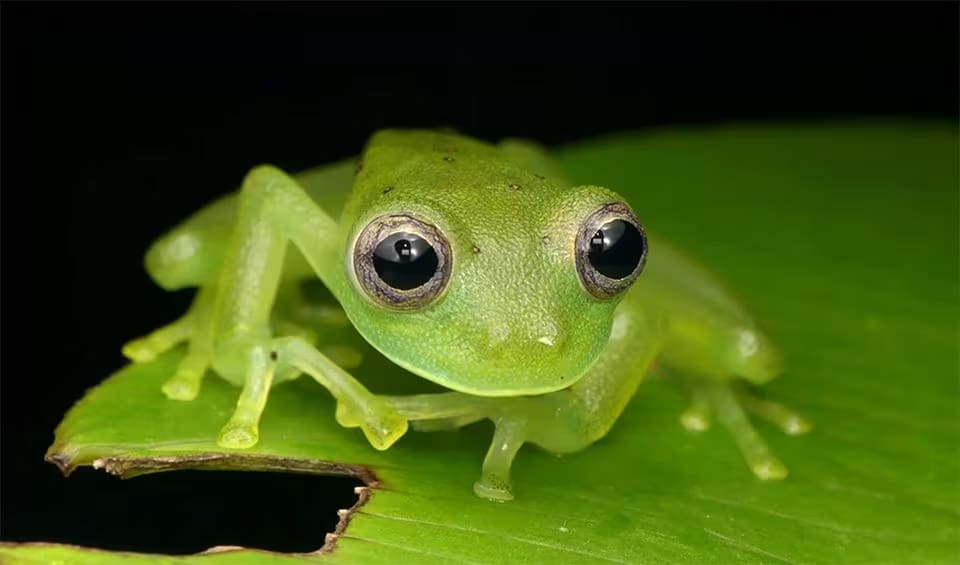The Nymphargus siren, another species within the realm of glass frogs, is part of the diverse and fascinating family Centrolenidae, known for their transparent skin. While “Siren Glassfrog” may colloquially refer to a particular species for its distinctive features or calls, clarifying the specific scientific name or details when discussing biodiversity is important to avoid confusion.
These frogs are typically found in Central and South America, thriving in humid, tropical environments, especially near streams and rivers in cloud forests and lowland rainforests. They are nocturnal, coming out at night to feed and mate, and during the day, they often remain motionless, blending into the leaves and vegetation to avoid predators.
Information on the Nymphargus siren is remarkably scarce, primarily because of several contributing factors. Firstly, the dense and often inaccessible habitats where these frogs reside pose significant challenges to researchers and conservationists. The rugged, remote areas of Central and South America, characterized by dense forests and steep terrain, make field studies and species tracking difficult.
Additionally, these frogs’ nocturnal and arboreal nature complicates observation and study, as they are active during the night and spend their days camouflaged among the foliage, making them particularly hard to spot. Moreover, the small size and translucent skin of the Nymphargus species further hinder their detection in their natural environment, blending seamlessly with the leaves and branches. This camouflage is an effective defense mechanism against predators but makes scientific observation and data collection challenging.
Distribution
 Colombia
Colombia Ecuador
EcuadorAnything we've missed?
Help us improve this page by suggesting edits. Glory never dies!
Suggest an editGet to know me
Terrestrial / Aquatic
Altricial / Precocial
Polygamous / Monogamous
Dimorphic (size)/ Monomorphic
Active: Diurnal / Nocturnal
Social behavior: Solitary / Pack / Herd
Diet: Carnivore / Herbivore / Omnivore / Piscivorous / Insectivore
Migratory: Yes / No
Domesticated: Yes / No
Dangerous: Yes / No




